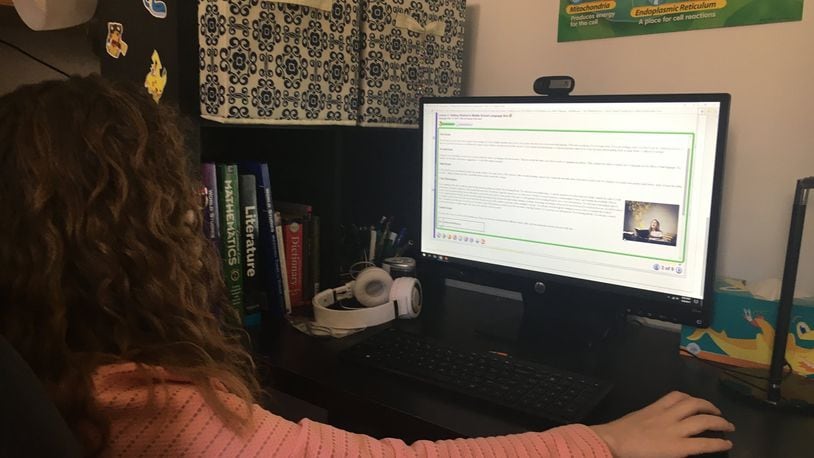Great River is a sister school to the long-established Ohio Connections Academy, which has grown from 3,600 to 5,100 Ohio students over the past two years and is part of a national online charter school network.
RELATED: One family’s experience with online school
“I think people tend to come in with a manner of skepticism no matter what,” said Swinehart, who was the assistant elementary school principal at Ohio Connections the past four years. “Our benefit is that Ohio Connections has had a proven track record in terms of being a better option in many cases than where students were coming from … not in all cases … but that was certainly something that we relied on.”
The Electronic Classroom of Tomorrow (ECOT) closed in January after the Ohio Department of Education sought to recoup $80 million in improper payments based on years of erroneous ECOT enrollment reports. Virtual Community School of Ohio closed in August after a similar $4 million case.
ODE spokeswoman Brittany Halpin said Friday that Ohio’s charter school accountability system is stronger thanks to recent reform legislation, adding that ODE “remains committed to making sure that all charter schools receive their correct funding.”
RELATED: How are local districts handling online approach?
“Technology is an ever-growing part of our everyday lives, and for some students, e-schools can provide a great alternative to a traditional brick-and-mortar classroom,” ODE’s Halpin said. “We expect to continue to have online providers as part of Ohio’s education community.”
Great River Connections Academy, like its sister school, is sponsored by the Ohio Council of Community Schools.
Swinehart said there are “not really any differences” between Great River and Ohio Connections, but having two schools will allow the group more room for enrollment growth under Ohio rules.
Connections students study an online curriculum via a “triangle partnership” of student, online teacher and “learning coach” (usually a parent) at home. Swinehart said the model is not for everyone, requiring an involved coach at home and motivated students, but offers flexibility both in when students study and what pace they move at.
RELATED: Online, homeschool, STEM school grow as options
“Families are looking for flexibility,” he said. “In our society, people are on the go a lot, wanting a flexible environment, and wanting something they can travel with.”
Great River is brand new, but Ohio Connections’ state report card for 2017-18 was not good. The school’s performance index on state tests was the best of the statewide online schools, but if compared against Ohio’s traditional school districts, it would have ranked in the bottom 10 percent. Its overall grade was a “D” and its student progress grade was an “F.”
Swinehart, like many leaders of traditional schools, said he doesn’t believe the state report card gives families a full picture of the individual education they will receive. He said he’s had that conversation with many incoming families.
RELATED: See state report cards of local charter schools
“It’s more about the fit. … A family could say, why would I leave from (higher-graded) district?” Swinehart said. “Well, the ‘failing’ school or district offered me what I, individually, needed, and the other school didn’t. … Every school has areas for improvement and we’re no different. … But we wouldn’t be continuing to add students and graduate larger classes if we weren’t making a difference in students’ lives.”
Swinehart said some students who have dealt with bullying or medical issues choose online school for the flexibility, but he added that Connections schools have high turnover, as some students enroll, then quickly learn online school is not a fit. Great River is drawing heavily from Ohio’s major cities, with 25 of 430 current students coming from Dayton.
He said student-teacher ratios are higher online – “you’re not going to see a situation where you have 22 or 24 students like a traditional classroom” – but Great River is in the process of hiring three more teachers to go with the 10 full-timers already in place.
RELATED: State files suit to recoup ECOT overpayments
That’s partially because nearly 800 more students are in the “application pipeline” for the school. Swinehart said based on recent history, maybe 250 of those will actually enroll.
“That’s quick adjustment, and it comes with challenges, but at the same time, it shows the need, or want, for this kind of environment,” he said.
About the Author
